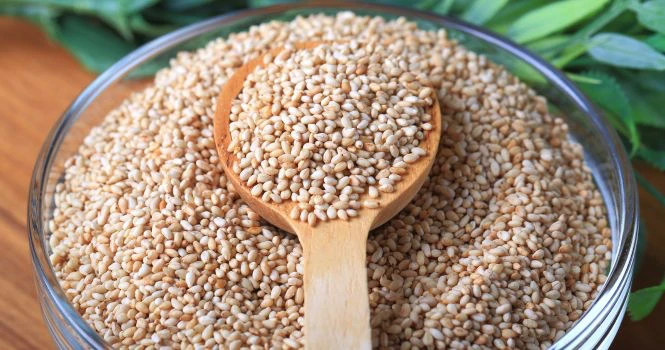Calculating Calories for Weight Loss
Weight loss is a common goal for many individuals, and understanding how to calculate the calories needed for weight loss is an essential step in the process. This article will provide a detailed overview of how to calculate your daily caloric needs for weight loss and provide an example for a clearer understanding of the concept.
1. Concept of Energy Balance
The foundation of weight loss revolves around the concept of energy balance, which is the relationship between the calories you consume through food and beverages and the calories you burn through physical activity and bodily functions. To lose weight, you need to create a calorie deficit, meaning you must consume fewer calories than you burn.
2. Determine your Basal Metabolic Rate (BMR)
Your Basal Metabolic Rate (BMR) is the number of calories your body requires to maintain its basic functions at rest. Several factors influence BMR, including age, gender, weight, height, and body composition. There are various equations to estimate BMR, with the most common being the Harris-Benedict equation and the Mifflin-St Jeor equation.
Example: Using the Mifflin-St Jeor equation for a 30-year-old female, weighing 150 pounds (68 kg) and standing 5’6″ (167 cm) tall:
BMR = 10 x weight (kg) + 6.25 x height (cm) – 5 x age (years) – 161
BMR = 10 x 68 + 6.25 x 167 – 5 x 30 – 161
BMR ≈ 1,462 calories per day
3. Calculate your Total Daily Energy Expenditure (TDEE)
Your Total Daily Energy Expenditure (TDEE) is the total number of calories you burn each day, including your BMR and additional calories burned through physical activity and the thermic effect of food. To estimate your TDEE, multiply your BMR by an activity factor that best represents your daily physical activity level:
- Sedentary (little to no exercise): BMR x 1.2
- Lightly active (light exercise/sports 1-3 days/week): BMR x 1.375
- Moderately active (moderate exercise/sports 3-5 days/week): BMR x 1.55
- Very active (hard exercise/sports 6-7 days/week): BMR x 1.725
- Extra active (very hard exercise/sports, physical job or training twice a day): BMR x 1.9
Example: For our example female who is moderately active:
TDEE = BMR x Activity Factor
TDEE = 1,462 calories x 1.55
TDEE ≈ 2,266 calories per day
4. Establish your Calorie Deficit
To lose weight, you need to create a calorie deficit. A general guideline is to create a deficit of 500-1,000 calories per day to lose 1-2 pounds (0.45-0.9 kg) per week. This is considered a safe and sustainable rate of weight loss. It’s crucial not to create too large of a deficit, as it may lead to nutrient deficiencies, muscle loss, and a slowed metabolism.
Example: To lose 1 pound per week, our example female should create a deficit of 500 calories per day:
Weight loss calories = TDEE – Calorie Deficit
Weight loss calories = 2,266 calories – 500 calories
Weight loss calories ≈ 1,766 calories per day
5. Adjust and Track Your Progress
It’s essential to monitor your progress and make adjustments to your calorie intake and physical activity levels as needed. Weight loss is rarely a linear process, and factors like plateaus, changes in body composition, and fluctuations in daily activity can impact your progress. Track your weight, body measurements, and overall well-being to assess how your body is responding to the calorie deficit.
6. Macronutrient Balance
While focusing on calories is important for weight loss, it’s also crucial to consider the balance of macronutrients (protein, carbohydrates, and fats) in your diet. A well-balanced diet can help maintain muscle mass, keep you satiated, and support overall health during weight loss.
- Protein: Aim for 0.8-1.2 grams of protein per pound of body weight (1.6-2.6 grams per kg) to support muscle maintenance and growth.
- Carbohydrates: Adjust carbohydrate intake according to your activity levels, with higher intake on more active days and lower intake on less active days.
- Fats: Include healthy fats from sources like avocado, nuts, seeds, and olive oil, aiming for 20-35% of your total daily calorie intake.
Example: For our example female aiming to consume 1,766 calories per day for weight loss:
Protein: 150 lbs x 1 g/lb = 150 grams of protein (600 calories)
Carbohydrates: (1,766 – 600) x 0.50 = 583 calories (145 grams)
Fats: (1,766 – 600) x 0.30 = 350 calories (39 grams)
7. Sustainable Lifestyle Changes
Weight loss is most successful when it’s part of a sustainable lifestyle change. Focus on incorporating healthy habits that you can maintain long-term, such as regular physical activity, balanced and nutrient-dense meals, and proper hydration. Additionally, prioritize stress management, quality sleep, and a positive mindset to support overall well-being during the weight loss journey.
Frequently Asked Questions
How do I calculate my weight loss calories?
To calculate your weight loss calories, first determine your daily caloric needs by using a TDEE (Total Daily Energy Expenditure) calculator. Then, create a calorie deficit by reducing your intake by 500-1,000 calories per day, which can lead to a weight loss of 0.5-1 kg per week.
How many calories should I take in a day for weight loss?
The number of calories you should consume for weight loss depends on your TDEE, age, gender, and activity level. Generally, creating a calorie deficit of 500 calories per day can help you lose weight at a healthy pace.
How many calories in 1 kg?
1 kg of body weight is roughly equivalent to 7,700 calories.
What is the formula for weight loss?
The formula for weight loss is: calories consumed – calories burned. Creating a calorie deficit will result in weight loss.
Are 1,500 calories a day enough?
For some people, 1,500 calories a day may be enough to lose weight, depending on factors like age, gender, and activity level. It’s important to ensure you’re getting enough nutrients and not cutting calories too drastically.
How many calories burn in a 1 km walk?
The number of calories burned during a 1 km walk depends on factors such as your weight and walking speed. On average, you can expect to burn around 60-100 calories per km.
How much is 500 calories in kg?
To lose 500 calories worth of weight in kg, divide 500 by 7,700 (1 kg = 7,700 calories). This equals approximately 0.065 kg.
How many calories are in a roti?
The number of calories in a roti (Indian flatbread) depends on its size and ingredients. On average, a medium-sized whole wheat roti contains around 80-110 calories.
How many steps burn 500 calories?
The number of steps needed to burn 500 calories varies depending on factors like your weight and walking speed. On average, you may need to take around 5,000 to 7,500 steps to burn 500 calories.
How to lose 3kg in 3 weeks?
To lose 3 kg in 3 weeks, aim for a daily calorie deficit of about 1,100 calories (7,700 calories per kg × 3 kg / 21 days).
Can I lose 2kg per week?
Losing 2 kg per week is an aggressive goal that may not be sustainable or healthy for everyone. A more reasonable target is 0.5-1 kg per week.
How do I calculate my diet plan?
To calculate your diet plan, first determine your daily caloric needs using a TDEE calculator. Then, decide on a calorie deficit for weight loss and create a meal plan that provides the necessary nutrients within those calorie limits.
How do I calculate my daily calorie intake?
Calculate your daily calorie intake using a TDEE calculator, which considers your age, gender, height, weight, and activity level.
Can I lose weight by walking 30 minutes everyday?
Yes, you can lose weight by walking 30 minutes every day, as long as you maintain a calorie deficit through a combination of diet and exercise. Walking can help you burn extra calories and improve overall health.
Sources
![]()









